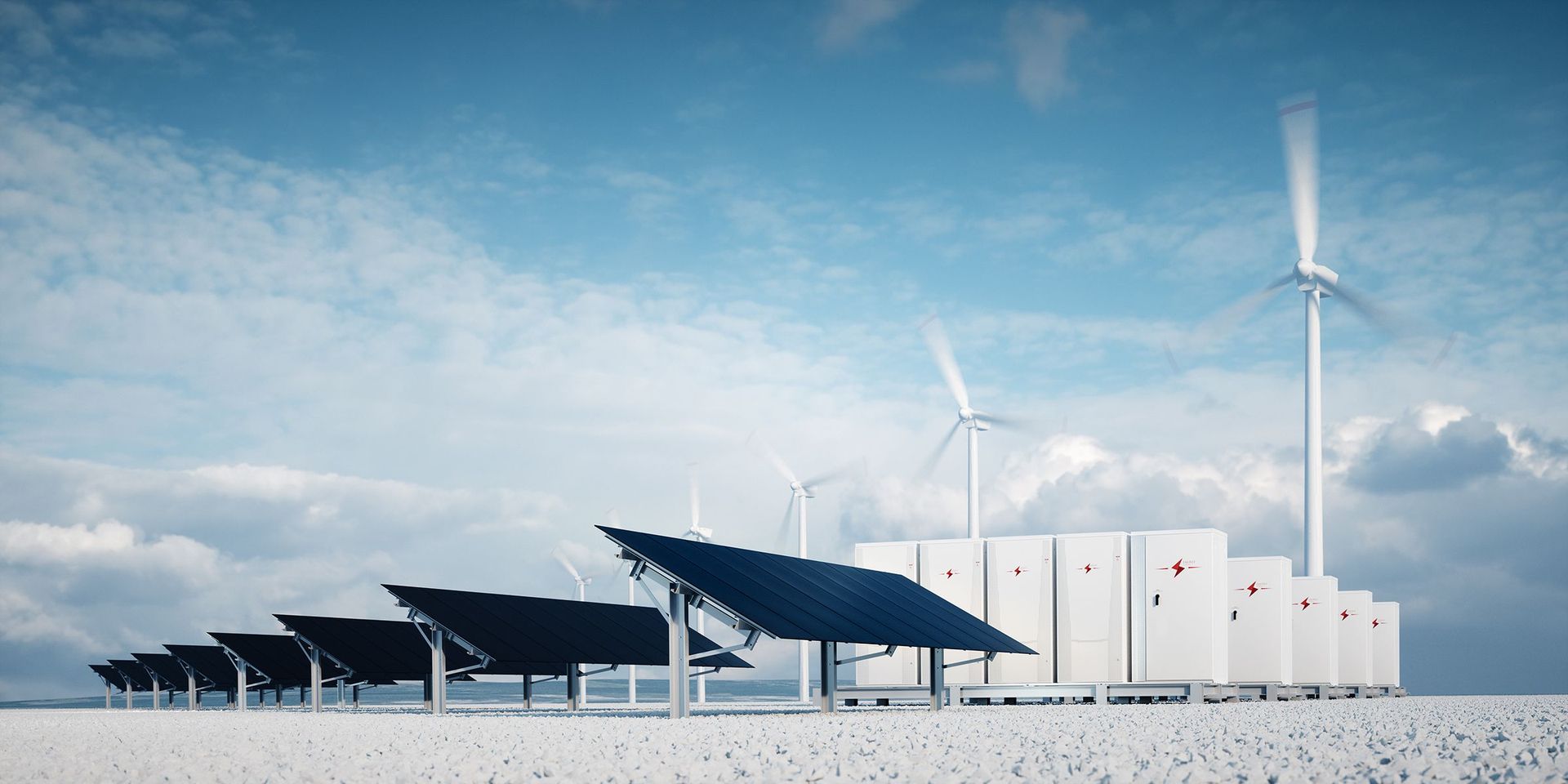What is a Futures Market?
Definition
Futures contracts are traded on a futures market. In such contracts, the contracting parties agree to postpone fulfillment to an agreed date in the future. Futures markets exist for a wide variety of contexts, from financial instruments to agricultural products and energy products.
The European energy futures market is part of the European Energy Exchange (EEX) in Leipzig and enables the trading of delivery contracts for a variety of products and commodities that are delivered at a future date. In the case of electricity, which is also traded at the EEX in Leipzig, the futures market offers producers and consumers the opportunity to plan their electricity deliveries long-term through futures contracts and to secure the price level. These futures contracts are clearly defined and obligate the contracting parties to ensure continuous offtake throughout the entire delivery period. This is also the central feature of the electricity futures market: unlike all other futures markets mentioned, there is no future settlement date defined here, but various settlement periods - making the electricity futures market more complex by one additional variable. Given sufficient liquidity, contracts with a duration of up to six years in advance can be concluded on this market. At the EEX, so-called electricity futures for 20 European markets are offered.
In German-speaking regions, "Power Purchase Agreement" (PPA) is commonly used as a term for long-term fixed-price electricity supply contracts. However, strictly speaking, a PPA is simply a contract between two parties for the delivery or offtake of electricity, which can also occur at variable prices, such as the spot price.
What is the difference between the spot and futures market?
Electricity is traded at the European Energy Exchange (EEX) on either the spot market or the futures market. The spot market, known as EPEX SPOT, is located in Paris and serves as a platform for trading electricity that is delivered within one to two days. This includes the intraday market, where electricity is traded and delivered on the same day, and the day-ahead market, where trading occurs one day before delivery.
In contrast, the futures market in Leipzig generally offers the option of concluding electricity supply contracts for longer periods of up to six years. This option enables participants to plan and secure their energy prices and volumes for the long term. However, for contracts covering periods far in the future, market liquidity is often low, which makes trading more challenging.
While the spot market is therefore primarily used for short-term security of supply and balancing immediate demand, the futures market is used to hedge the currently traded price level.
How does electricity trading on the futures market work?
The futures market works by trading so-called futures contracts, also known as futures. These are legally binding agreements to buy or sell a commodity - in this case electricity - at a predetermined price over a future period. This period can range from a few weeks or months to several years. Each of these periods is regarded as a separate product.
Futures are categorized as follows:
- Week-Futures: These are weekly products that allow traders to trade electricity deliveries for up to five weeks in advance.
- Weekend-Futures: These futures specifically cover weekends and can be traded up to two weekends in advance. They are particularly useful for companies looking to hedge against demand spikes over weekends.
- Month-Futures: These are monthly products that enable trading of electricity for up to ten months in advance.
- Quarter-Futures: These are quarterly products allowing trading for up to eleven consecutive quarters.
- Year-Futures: These are annual products that enable trading of electricity for up to six years in advance.
Typically, the sellers on the futures market are electricity producers, while the buyers are mainly electricity suppliers who then pass the electricity on to end consumers. Additionally, large industrial companies with high electricity consumption also use the futures market to purchase electricity directly from producers. This allows them to purchase the required quantities of electricity at a fixed price and to secure their electricity supply over the long term.
In addition to the various futures types, which are based on the length of the delivery period, the futures market also distinguishes between baseload and peakload.
Baseload futures are designed to provide a constant power supply around the clock, 24 hours a day, seven days a week. These contracts cover the constant basic demand for electricity and are therefore ideal for covering the continuous base load demand. Energy suppliers use baseload futures to guarantee a constant and secure supply of electricity that covers the basic supply without interruption.
Peakload futures are designed to secure energy supply during peak consumption times. They exclusively cover the hours from 8 AM to 8 PM, Monday through Friday. These contracts ensure electricity delivery during these hours and are tailored to meet the increased energy demand in these periods. They are essential for energy providers to respond to peak loads that exceed the base load.
Both baseload and peakload describe the different demand patterns in electricity consumption and are therefore fundamental to the structuring of futures contracts. Thus, electricity contracts can be purchased and sold as either "base" or "peak."
More information
Pros and Cons of the futures market
The futures market offers electricity consumers and producers the opportunity to fix prices for future electricity deliveries, providing both sides with planning security. Participants can also hedge against unwanted price movements—consumers against price increases and producers against price drops. For consumers with high energy costs, it's often essential to secure at least part of their future consumption, as is the case for suppliers who rely on a certain minimum price level.
The downside of long-term electricity supply or offtake contracts is that they involve commitments that may prevent the parties from benefiting from future favorable price movements. Prices on the futures market only reflect the current market participants' assessment of future price trends, which constantly changes along with market prices. The actual spot market price at the time of delivery can significantly differ from the current futures market price for that period. For example, falling spot market prices can mean lost savings for those who have already committed to higher prices. Moreover, being locked into long-term delivery periods can limit flexibility to respond to short-term market opportunities, which may lead to competitive disadvantages in fast-moving or dynamic markets. Ultimately, deciding how much of future consumption or production to contract today is a strategic bet on the future. The price level established on the futures market represents the "Best Guess" by market participants about how supply and demand will evolve. The outcome of this bet remains uncertain and cannot be predicted with certainty today.
Disclaimer: Next Kraftwerke does not take any responsibility for the completeness, accuracy and actuality of the information provided. This article is for information purposes only and does not replace individual legal advice.


